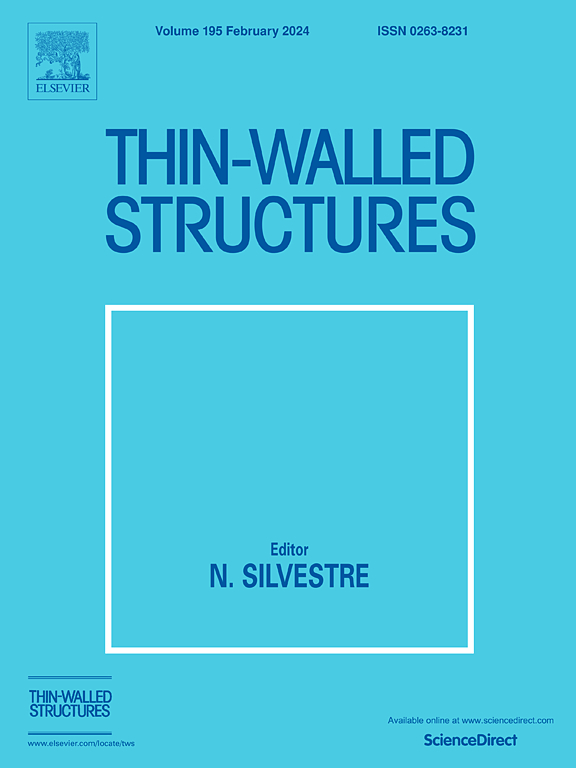Design, fabrication and mechanical properties of multi-dimensional graded-amplitude gyroid structures
IF 5.7
1区 工程技术
Q1 ENGINEERING, CIVIL
引用次数: 0
Abstract
Graded Triply periodic minimal surface (TPMS) lattice structures have gained significant attention due to their ability to enhance the mechanical and energy-absorbing properties of uniform structures. However, current studies have focused primarily on the graded design of topological constants, relative density, size, and wall thickness and there has been less research on the design of graded-amplitude TPMS structures. Inspired by some biological gradient structures, this study presents a method for designing multi-dimensional graded-amplitude structures based on a Gyroid structure. A graded-amplitude Gyroid structure was fabricated using stainless steel 316L powder by selective laser melting (SLM). The mechanical properties of the structures were investigated using quasi-static compression tests and numerical simulation methods. The findings indicate that the manufacturing accuracy of SLM fabrication is affected by the variation in the structure amplitude. A smaller amplitude results in more particles adhering to the structure surface. Additionally, a graded-amplitude can alter the angle between the structure surface and the loading direction, which affects the mechanical properties and energy absorption capacity of the structure. The specific energy absorption of the three-dimensional gradient structure with amplitude variation range of 0-1 reaches 33.98 J/g, which is 35.76 % higher than that of the uniform structure. Furthermore, graded-amplitude can change the deformation pattern of the structure. The one-dimensional gradient structures with amplitude variations ranging from 0 to 2 displays deformation in a layer-by-layer manner. Moreover, one-dimensional and two-dimensional gradient structures display significant anisotropic properties, whereas three-dimensional gradient structures exhibit approximately orthogonal isotropic characteristics. Finally, a parametric analysis shows that the low-dimensional graded-amplitude structure has better mechanical properties and energy absorption characteristics when the amplitude variation range is greater than 1 but worse when the amplitude variation range is less than 1. This graded-amplitude design method offers new design freedom for porous structures and new ideas for developing energy-absorbing devices.

求助全文
约1分钟内获得全文
求助全文
来源期刊

Thin-Walled Structures
工程技术-工程:土木
CiteScore
9.60
自引率
20.30%
发文量
801
审稿时长
66 days
期刊介绍:
Thin-walled structures comprises an important and growing proportion of engineering construction with areas of application becoming increasingly diverse, ranging from aircraft, bridges, ships and oil rigs to storage vessels, industrial buildings and warehouses.
Many factors, including cost and weight economy, new materials and processes and the growth of powerful methods of analysis have contributed to this growth, and led to the need for a journal which concentrates specifically on structures in which problems arise due to the thinness of the walls. This field includes cold– formed sections, plate and shell structures, reinforced plastics structures and aluminium structures, and is of importance in many branches of engineering.
The primary criterion for consideration of papers in Thin–Walled Structures is that they must be concerned with thin–walled structures or the basic problems inherent in thin–walled structures. Provided this criterion is satisfied no restriction is placed on the type of construction, material or field of application. Papers on theory, experiment, design, etc., are published and it is expected that many papers will contain aspects of all three.
 求助内容:
求助内容: 应助结果提醒方式:
应助结果提醒方式:


